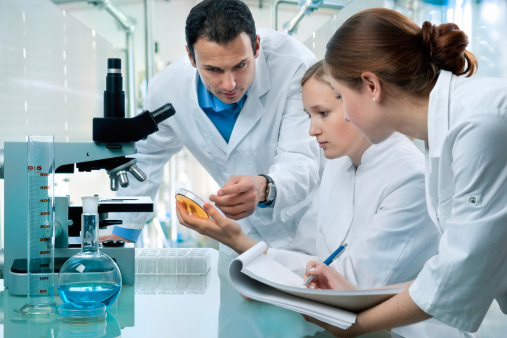Benefits of Human Tissue Experimentation
One of the most versatile and dynamic substances used by researchers and doctors is also the most ubiquitous: human tissue. Donated tissue samples are used many different ways, from basic study to advanced testing. Scientists can better understand the disease process by observing it at a cellular level. Drugs can also be tested and refined on tissue samples. Some of the more important areas of study include cancer, diabetes, liver disease, stroke and Alzheimer’s disease. It is also used to help develop diagnostic tests, so that doctors can detect disease less invasively, during a routine office visit. The most promising area, however, is one of the newest: regenerative medicine. Doctors hope to use human tissue not just to treat disease, but to cure it by restoring the body to its original state of good health.
One of the advantages of using human tissue is that it often replaces animal testing, which is more costly and less precise. Years ago, all cosmetics were routinely tested on animals. Today, tissue samples are used to test the toxicity of various chemicals before they come to market. Not only is this less expensive, it is more precise because scientists are using an accurate model.
Pharmaceutical drugs are also routinely tested on human tissue. Researchers believe that this methodology is safer, since drugs tested at a cellular level can be more carefully analyzed and accurately calibrated. Often, they will use human liver cells or complete tissue slices, so that they can see how substances might be altered chemically in the body as the result of metabolic activity. Human cells are also used to test absorption rates, since that affects potency. When a drug is ingested, it passes through different barriers in the body. As it travels through these barriers, it is absorbed and the potency of the drug changes. Scientists can model these barriers in the laboratory in order to see how a drug behaves as it passes through these walls. That way, they can more accurately calibrate dose which makes it safer for human subject testing. Human tissues are also used to closely observe the disease process. Scientists hope that by understanding what happens on a cellular level, they will be able to refine more subtle diagnostic tests. If a doctor is able to easily test for disease in a routine medical checkup, they are more likely to catch the disease in its earliest stages. The earlier problems are detected, the easier it is to provide treatment.

For most researchers, however, the most promising and exciting use for human tissue is in the field of regenerative medicine. Scientists hope to someday grow human tissue into functional organs. That way, if someone is suffering from heart failure, doctors can manipulate cells in the laboratory to literally grow a new heart. If this sounds farfetched, consider the fact that scientists have already grown a very small, but functional, liver. To do this, they used stem cells, which are pluripotent. This means that, when manipulated in the laboratory, they can grow into any cell or tissue in the body. Scientists working in this area are studying how to make the organ larger by analyzing how tissue ‘stretches’ as it grows and accommodates new cells.
In November of 2013, scientists reported that they found a way to grow skin almost instantly by manipulating tissue in the laboratory. This is an important breakthrough, beneficial to accident and burn patients. In the past, doctors struggled to have enough skin to help a severely injured patient. When they collected samples from a donor, they worried about the potential for rejection. By growing the patients own skin, not only would they have an ample supply, they would not have to worry about the problem of rejection.
What can we expect in the future? Here are just are just a few examples:
Cornea Transplants: Scientists are working to use tissue samples to better support cornea transplants. They are looking for ways to use the patient’s own limbal cells to keep a donated cornea from rejecting.
Blood Vessels: Researchers are trying to develop a tissue engineered artery that can be transplanted when a patient’s artery is diseased.
Peripheral nerves: When a patient is injured in an accident, sometimes the peripheral nerve is severed. Scientists are looking for ways to use tissue at the injured site, bridging the gap between the severed nerve endings. If they are successful, they can restore function to the areas that were affected.
Cartilage: For patients accident patients or individuals with degenerative bone disease, there is a need for new cartilage. Researchers are using tissue samples to develop cartilage, eventually suitable for transplantation.
The next twenty years promise to be some of the most important in the history of medicine. Scientists are at the cusp of not just treating some of the systemic diseases that have affected humans throughout the centuries, they are working towards a cure. If they succeed, and most scientists believe they will, it will be thanks to human tissue. In essence, the body (with a little help from researchers) will be healing itself. Of course, the most important resource is the tissue itself- which is given to researchers by donors. If you are not yet an organ and tissue donor, please consider it. Your gift may contribute to the eradication of a disease.
Cammie Channing is a dental hygienist and health writer from Tucson, Arizona. She encourages everyone to become organ and tissue donors today.









